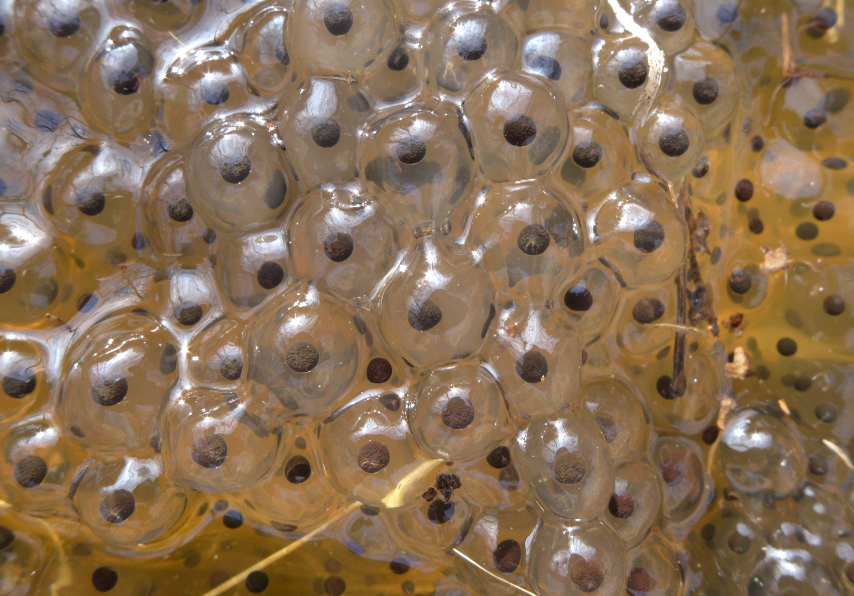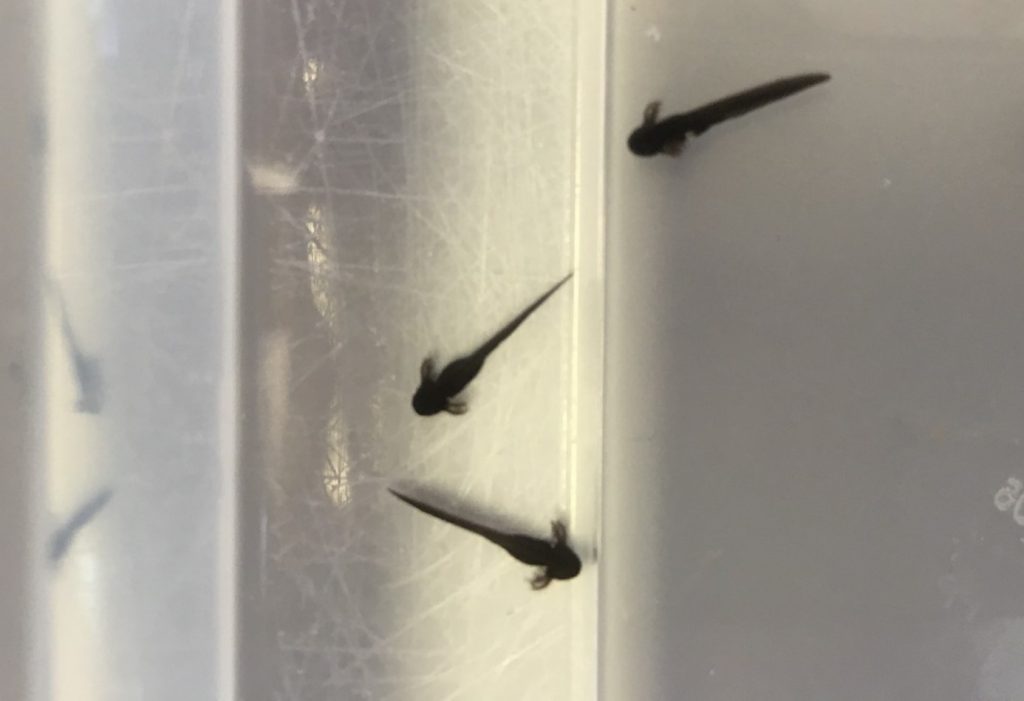In this post, Carsten Brühl and Elena Adams explain the background to their new published paper on amphibian sensitivity at different aquatic life stages and acute effects from aquatic fungicide exposure.
Pesticides have been identified as one of the major reasons for the worldwide decline of amphibian populations. For Environmental Risk Assessments (ERA) currently no standardized and agreed upon guideline is available on how to conduct a risk assessment for aquatic life stages of frogs, the tadpoles, or on how to perform a toxicity test with these organisms.

The different life stages of tadpoles were described by Gosner and are an agreed form to communicate developmental stages of amphibians. The stages 1-19 describe developments of the embryo, 20-25 are used for the so-called “hatchling”, a first active tadpole that emerges from the egg. The tadpoles or larvae are included in stages 26-41, and afterwards the animal metamorphoses.
In most ecotoxicological studies, tadpoles of the Gosner stage (GS) 25 are tested. However, the sensitivity of tadpoles could be different in other life stages. We therefore evaluated the sensitivity of aquatic life stages of the European common frog (Rana temporaria) over the entire developmental range from early to late aquatic life stages to identify sensitivity differences. We included GS15, a late embryonic stage in a protective eggshell, GS20, the first hatchling stage with an external gill circulation, the free-swimming GS25 in which internal gill circulation starts, GS 36 when hindlimbs develop, and GS42 when forelimbs emerge.

The five aquatic stages were exposed to the viticultural fungicide folpet (Folpan 80 WDG) in a dose–response setup. The 96-h mortality data identified the hatchling stage GS20 as the most sensitive aquatic stage, being > 15% (significantly) more sensitive compared to the commonly used test stage GS25. We suspect that this is due to the external gills being present, that could allow for a higher uptake due to a larger exchange surface.
Therefore, it seems necessary to either start testing at the earlier GS or incorporate an additional uncertainty factor that addresses life stage sensitivity differences in ERA. To generate more information on the size of this uncertainty factor, similar studies with other pesticides are required.
The paper “Fungicide Exposure Induces Sensitivity Differences in Aquatic Life Stages of European Common Frogs (Rana temporaria)” was authored by Elena Adams and Carsten Brühl, and published open access in the Journal of Herpetology.
